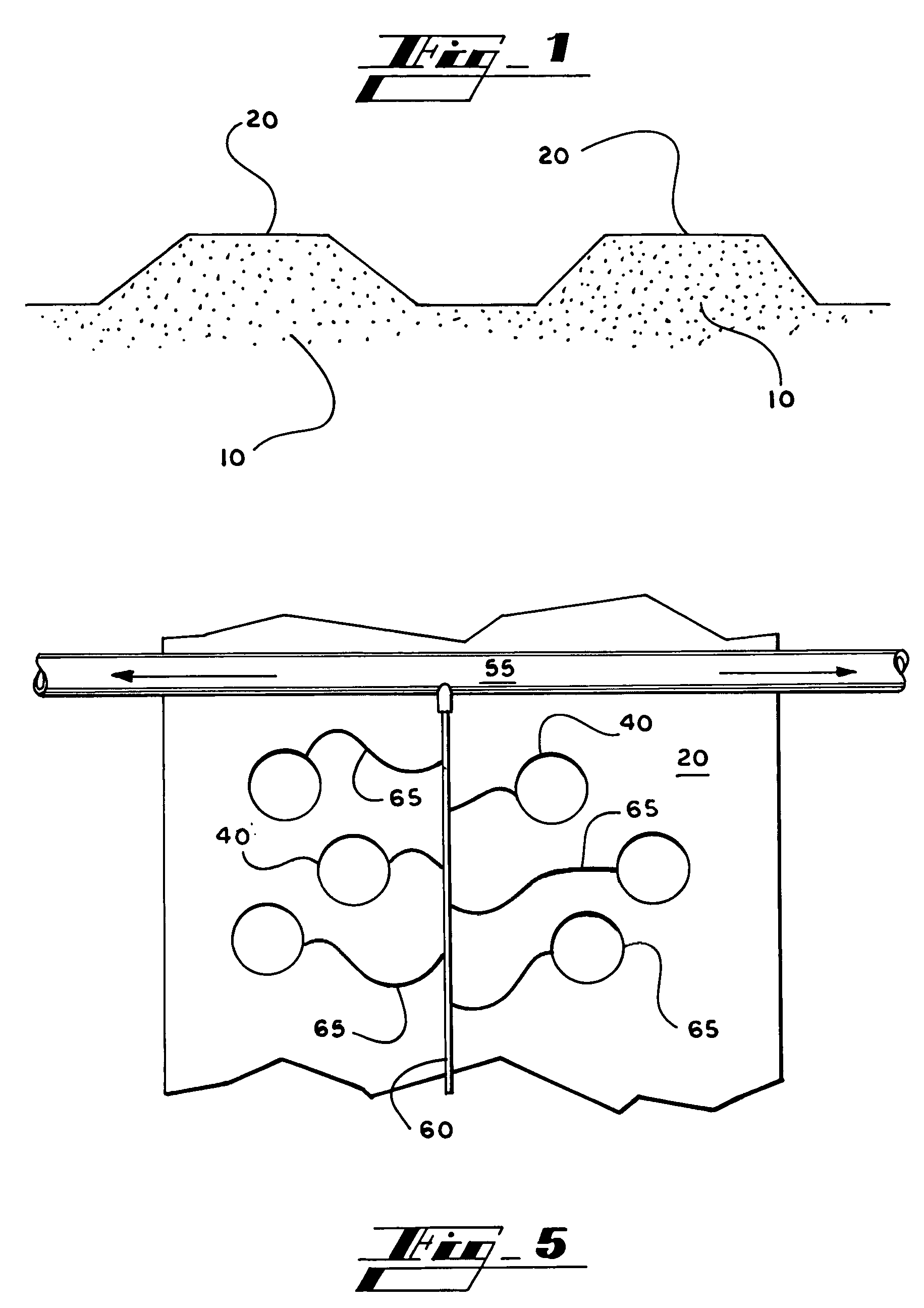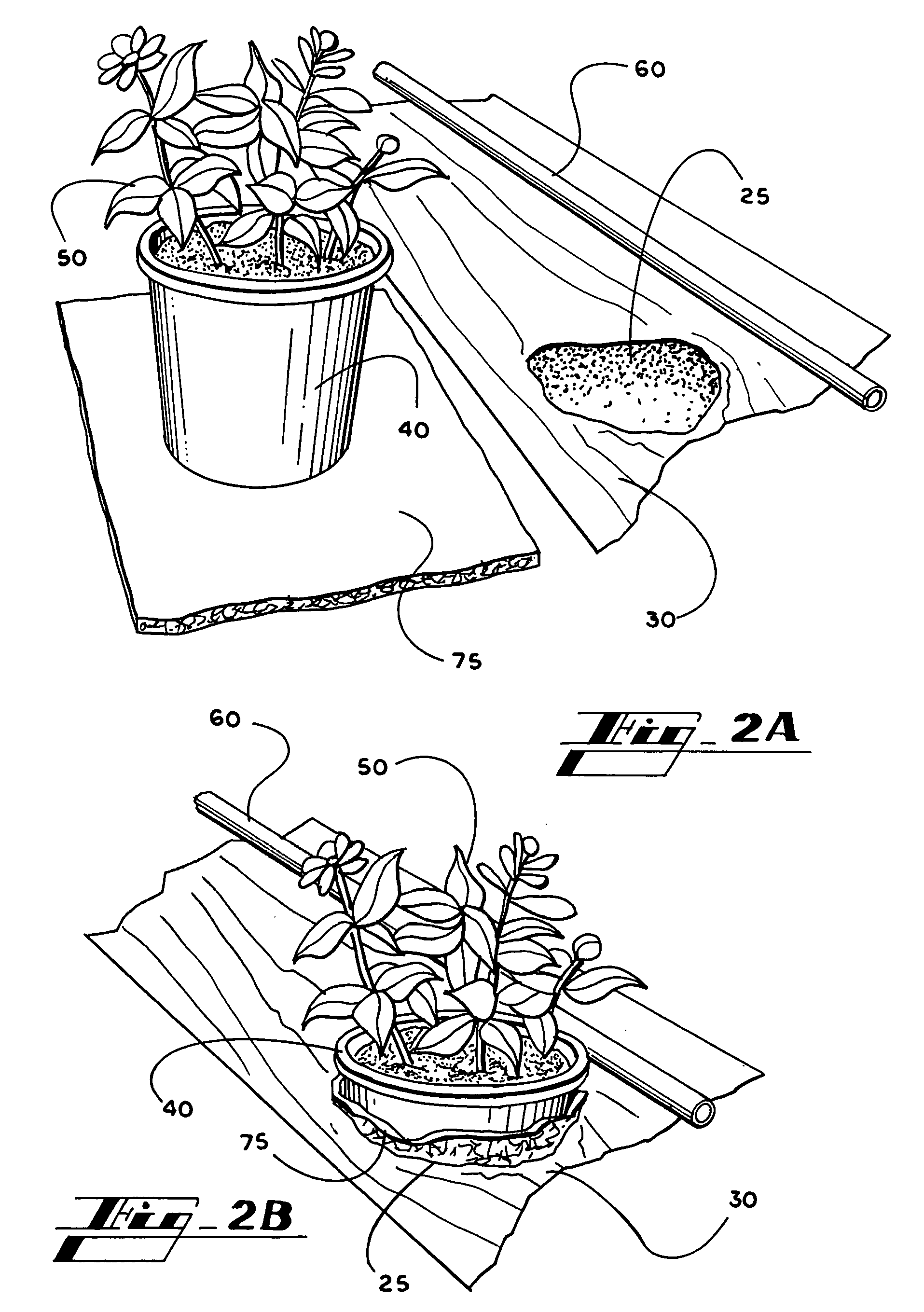Method and planting bed for production of a plant in a container
a technology for planting beds and plants, applied in soil-working methods, plant phenotype modification, agriculture tools and machines, etc., can solve the problems of high labor, construction and water management costs of ornamental plant materials, and the need to implement costly water management practices, so as to reduce or eliminate the effect of growing area climate, efficient, cost-effectiv
- Summary
- Abstract
- Description
- Claims
- Application Information
AI Technical Summary
Benefits of technology
Problems solved by technology
Method used
Image
Examples
Embodiment Construction
[0043] In an embodiment of the present invention, a method is provided for the production of container plants in a raised bed environment.
[0044] Referring to FIG. 1, soil 10 is prepared by plowing and tilling. Debris is also removed that would impair a presspan for creation of raised bed 20.
[0045] The planting beds 20 are formed by a Kenceo Presspan or similar piece of bed forming equipment. Such raised beds 20 are known in the production of vegetables and fruit produce. The bed 20 spacing and size are determined by the needs of the grower.
[0046] Referring to FIGS. 2A-4, the raised beds 20 are preferably covered with a weed mat barrier or, alternatively, standard plastic mulch, and a driptape 35 provided under the barrier 30. If plastic is used, a soil fumigant for weed control is preferable.
[0047] The driptape 35 is preferably not used in the present invention to water the plants 50 in container 40, but for two other purposes. First, the irrigation driptape 35 maintains moistur...
PUM
 Login to View More
Login to View More Abstract
Description
Claims
Application Information
 Login to View More
Login to View More - R&D
- Intellectual Property
- Life Sciences
- Materials
- Tech Scout
- Unparalleled Data Quality
- Higher Quality Content
- 60% Fewer Hallucinations
Browse by: Latest US Patents, China's latest patents, Technical Efficacy Thesaurus, Application Domain, Technology Topic, Popular Technical Reports.
© 2025 PatSnap. All rights reserved.Legal|Privacy policy|Modern Slavery Act Transparency Statement|Sitemap|About US| Contact US: help@patsnap.com



